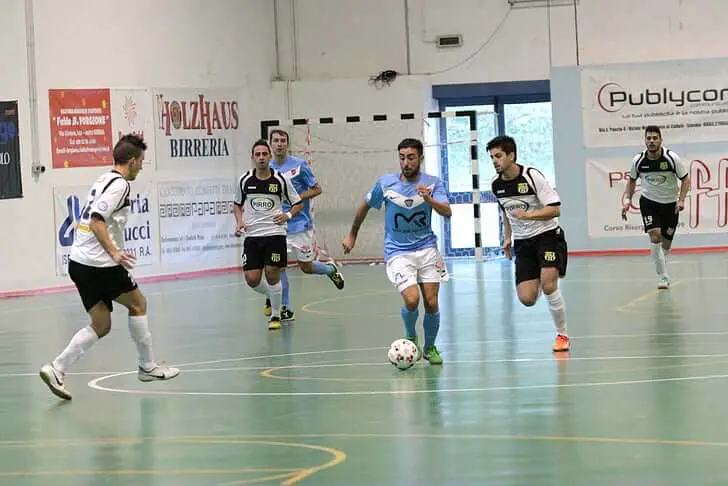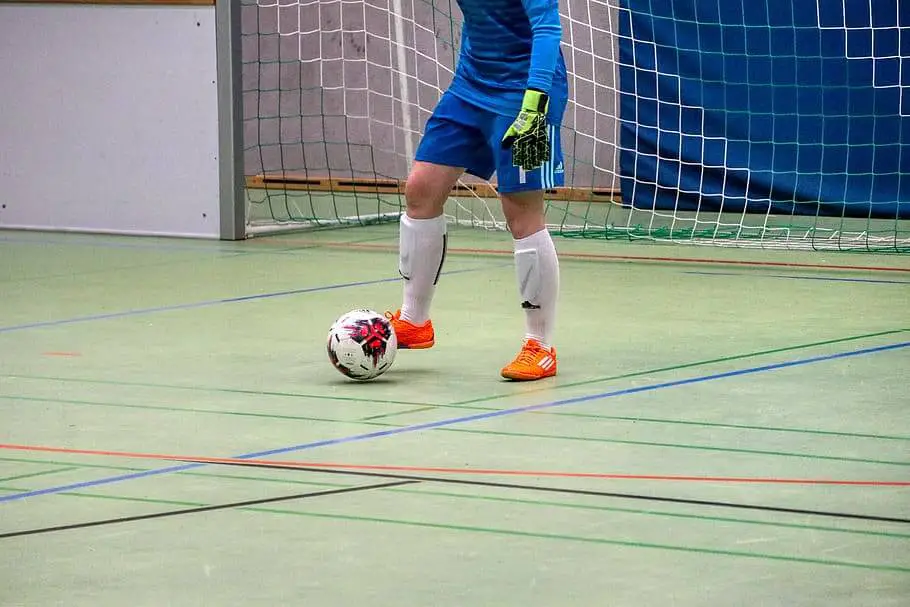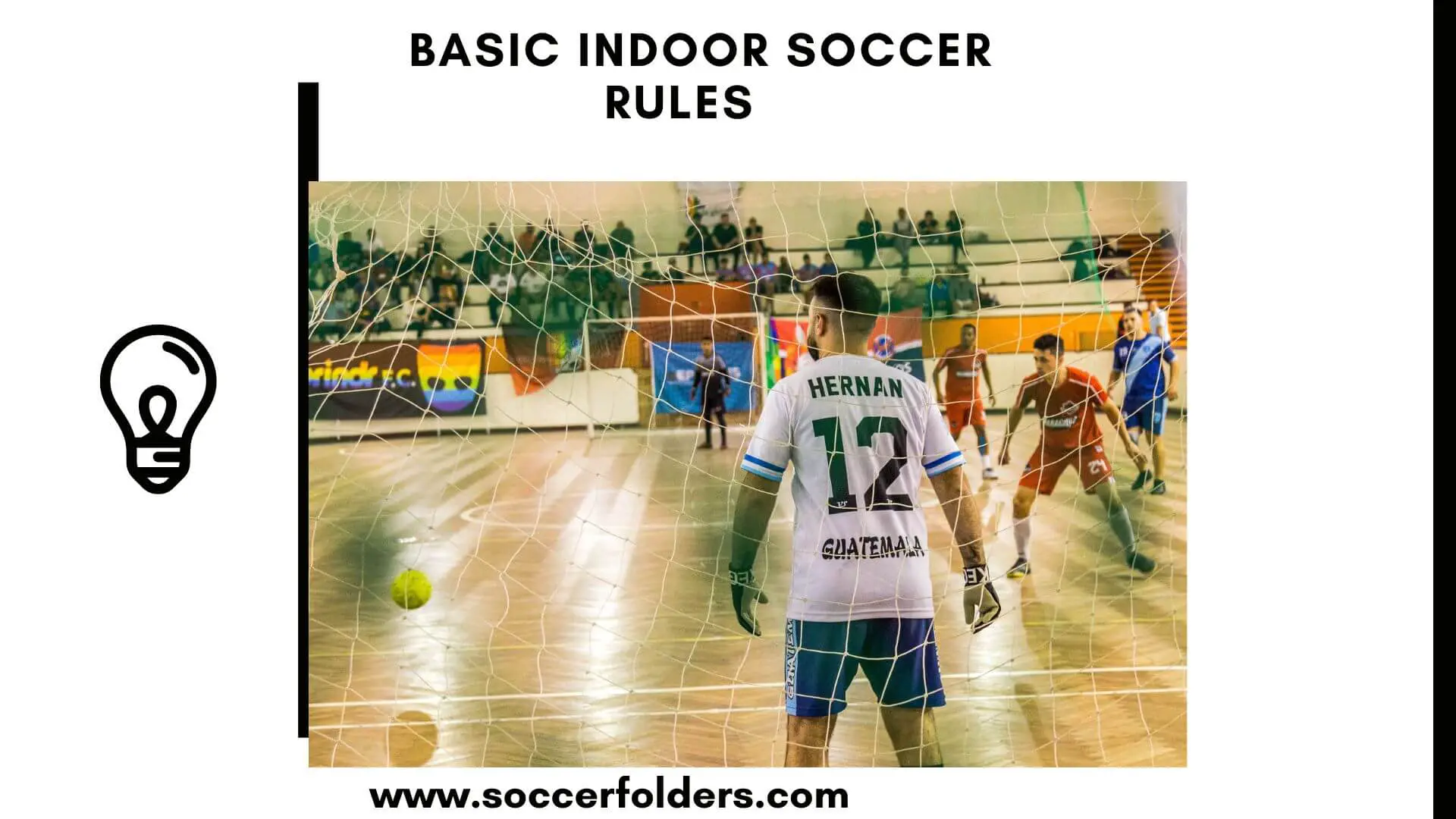Indoor soccer is a thrilling, fast-paced sport that can be played all year round, regardless of the weather conditions outside. Whether you’re an experienced player or just starting, understanding the basic indoor soccer rules is essential to enjoying the game and playing it safely.
In this post, we’ll cover the basic indoor soccer rules and offer some helpful tips to improve your game.
Without further ado, let’s jump right in.
Before we dive into the rules, it’s worth noting that indoor soccer is similar to outdoor soccer, but with some key differences. The game is played on a smaller, indoor court with walls, and teams typically have fewer players. The smaller court and reduced number of players lead to a faster-paced, more intense game.
Now let’s take a look at the basic indoor soccer rules.
Basic Indoor Soccer Rules
1. Team Size and Substitutions

Indoor soccer is typically played with five players on each team, including the goalkeeper.
Substitutions are allowed at any time during the game, but the player coming off the court must be completely off before the substitute can enter. Each team is allowed a maximum of seven substitutions per game.
2. Duration of the Game
The game is typically divided into two halves, each lasting 20 minutes, with a 5-10 minute halftime break. However, the duration of the game can vary depending on the league or tournament rules.
Note that in amateur indoor soccer games or tournaments, most of the time, there is no break time. The game can last for 20 minutes only.
3. The Ball
The ball used in indoor soccer is typically smaller and heavier than the one used in outdoor soccer. The official size of the ball is size 4, and it weighs between 14-16 ounces.
4. Scoring
A goal is scored when the entire ball crosses the goal line between the goalposts and under the crossbar. If the ball touches the ceiling or walls before crossing the goal line, it is considered out of bounds, and play is restarted with a kick-in from the sideline.
5. Kick-Ins
When the ball goes out of bounds along the sideline, it is restarted with a kick-in. The opposing team must stand at least five feet away from the ball during the kick-in.
6. Goalkeeper Rules

The goalkeeper is the only player allowed to use their hands or arms while on the court, but only within the penalty area. The penalty area is a semi-circular area in front of the goal that extends 18 feet from the goal line.
==>> Also read: Can a goalie slide in indoor soccer?
7. Fouls and Free Kicks
Players are not allowed to slide tackle or make violent physical contact with opponents in any way. If a foul is committed, the opposing team is awarded a free kick from where the foul occurred.
8. Penalty Kicks
If a foul is committed inside the penalty area, the opposing team is awarded a penalty kick. The ball is placed on the penalty spot, and the kicker must shoot the ball into the goal just like in normal soccer games.
9. Offside Rule
There is no offside rule in indoor soccer, which means that attacking players can be positioned anywhere on the court at any time.
Now that you have a better understanding of the basic indoor soccer rules, let’s look at some tips to improve your game.
You can also read more on the official indoor soccer rules here.
Tips to Improve Your Indoor Game
- Improve Your Ball Control
Indoor soccer is a fast-paced game that requires excellent ball control skills. Practising dribbling, passing, and shooting drills can help you improve your ball control and make you a better player.
- Learn to Play in Tight Spaces
Indoor soccer is played on a smaller court with walls, which means that players must learn to play in tight spaces. Practising small-sided games can help you develop your ability to play in tight spaces and improve your decision-making skills.
- Stay in Good Physical Condition
Indoor soccer is a physically demanding game that requires good fitness and endurance. Staying in good physical condition through regular exercise can help you perform better on the court and avoid injuries.
- Communicate with Your Teammates
Communication is key in indoor soccer, especially in a fast-paced game where decisions need to be made quickly. Good communication can help you coordinate with your teammates, make better decisions, and ultimately improve your performance on the court.
- Understand Your Role
Each player on the team has a specific role to play, and understanding your role can help you contribute to the team’s success. Whether you’re a defender, midfielder, or forward, understanding your role and playing to your strengths can help you make a valuable contribution to your team.
- Be Aggressive but Controlled
Indoor soccer is a physical game, and being aggressive can help you win the ball and make plays. However, it’s important to remain in control and avoid committing fouls that could hurt your team. Focus on being aggressive but controlled, and avoid reckless challenges that could result in a foul or injury.
- Practice Set Pieces
Set pieces, such as corner kicks and free kicks, can be an important part of indoor soccer. Practising set pieces can help you develop strategies and techniques that can help you score goals and win games.
- Watch and Learn
Watching professional indoor soccer games can be a great way to learn new skills and tactics. Pay attention to the players’ movements, strategies, and decision-making skills, and try to incorporate what you learn into your own game.
==>> You can also read: Can goalkeeper wear gloves in Futsal?
Final Word
Indoor soccer is a thrilling sport that can be played all year round, regardless of the weather conditions outside.
Understanding the basic indoor soccer rules is essential to enjoying the game and playing it safely.
Whether you’re an experienced player or just starting, practising your ball control, playing in tight spaces, communicating with your teammates, and understanding your role can help you become a better player.
So get out there, have fun, and enjoy the excitement of indoor soccer!


